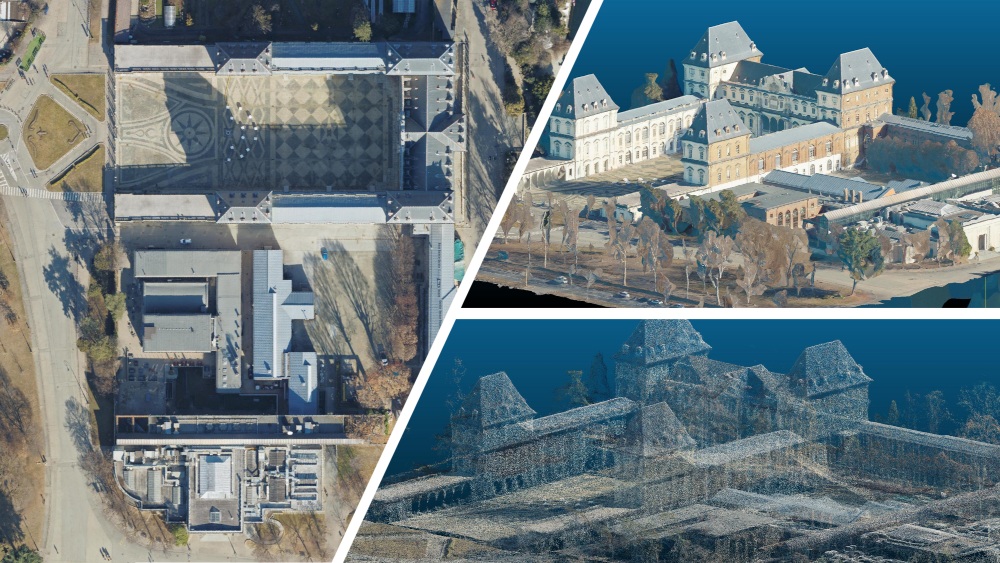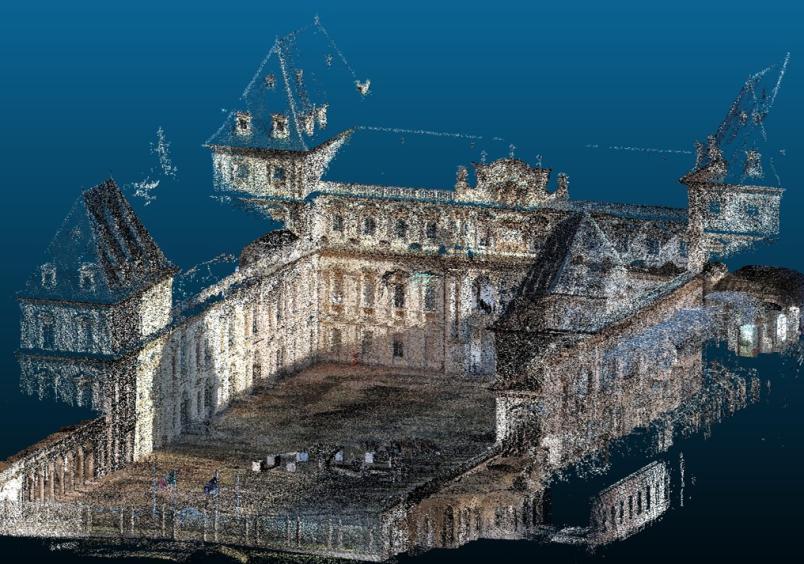
Digital Twins of Urban and Territorial Areas to Improve Public Services

A digital twin of the city of Turin to better understand the city and manage the urban landscape more efficiently. This is the focus of the work carried out by Interuniversity Department of Regional and Urban Studies and Planning-DIST at Politecnico di Torino and the Municipality of Turin (Città di Torino). It is an important initiative that can serve as a model for other cities, as well as for less urbanised areas, and will soon be available to both local policymakers and individual citizens.
“The work began about two years ago, when Politecnico decided, with dedicated funding, to acquire a massive volume of photogrammetric data to build a highly detailed and accurate three-dimensional model of the city”, explains Piero Boccardo, Full Professor at DIST, who leads the project. “A major challenge we faced was managing the enormous volume of data we collected, especially considering all the data acquired using LiDAR technology, which ‘scanned’ the city in fine detail, collecting data about the shapes and heights of buildings, vegetation, and streets”.
The Digital Twin is built from approximately 32,000 aerial images, acquired both vertically and obliquely, along with centimetre-accurate LiDAR scans. These were complemented by thousands more data points collected from ground level. The integration of image data with laser scans makes it possible to create a final model where images provide colour and visual detail, while the laser scans capture exact geometric information, even in areas that are difficult to photograph. The result is a vast 3D point cloud faithfully representing every building, tree, and road in the surveyed area.
This detailed digital reconstruction supports a wide range of applications. With technical support and consulting of Politecnico, Città di Torino has initially identified two major areas of application. On one hand, urban green space management; on the other, a detailed analysis of road infrastructures that lays the groundwork for a Plan for the Elimination of Architectural Barriers (PEBA) – aimed at removing physical obstacles to accessibility. The model accurately captures the state of vegetation, road surfaces, sidewalks, and signage, making it easier to plan targeted maintenance, reduce costs, and improve coordination between local entities. Other applications have also been developed, particularly in the broader area of renewable energy, such as calculating the solar potential of rooftops and evaluating building energy performance.
“This model” – emphasises Boccardo – “isn’t just an accurate representation of reality, but a practical tool to help set priorities for interventions”.
Turin’s Digital Twin is part of a broader urban management strategy based on a new comprehensive vision of the city. It reflects a deliberate effort to modernise and improve the way urban information is used. “We have sought out innovative technologies to support urban management with the goal of streamlining processes and improving public services”, explains Alessandra Cimadom, Director General of Città di Torino. The overarching goal is to enable faster, more informed, and more effective decision-making. This is an objective that the city administration of Turin can achieve only through survey tool s that represent the territorial area with increasingly precision. “With this initiative,” – adds Cimadom – “we’re also working on closing a 20-year gap in local knowledge and management. We chose to partner with Politecnico because it offers high-level expertise that our city truly needs”.
Of course, the project has not been without challenges. While data processing requires “significant computational resources”, as Boccardo explains, there is also a need to “overcome significant organizational and cultural barriers”, as Cimadom points out.
Still, the Director General clarifies: “A digital twin offers a unified and consistent view of the reality we need to address. It allows for faster decision-making, easier information sharing across departments, and more efficient coordinated interventions. One key example we are particularly committed to is the Plan for the Elimination of Architectural Barriers”. In all of this, Turin is setting an example at the European level.
The Città di Torino’s innovative approach was recently presented as an example at the Chicago Innovation event and at the latest edition of the Arab European Cities Dialogue held in Riyadh.
Are Digital Twins only for large urban centres? Not at all. This technology can also benefit smaller towns or mixed-use areas, as long as the balance between benefits and financial resources is carefully assessed. Civil Protection is another sector that can greatly benefit from digital twins, for example in monitoring bridges, riverbanks, and flood-prone zones. The key to success lies in evolving these projects and making them available to citizens to improve the quality of public services.
“In Turin,” – explains Mayor Stefano Lo Russo – “we have decided to invest resources in a broad digital strategy, testing and implementing smart solutions within both the public administration and citizen services. At the same time, we are committed to bridging the digital divide and supporting the digital transition in the most inclusive and effective way possible. One of the key elements of this strategy is certainly the development of the Digital Twin, an advanced tool that offers a dynamic, virtual model of the city, enabling future scenario simulations, strategic decision-making, and a more efficient urban planning. By combining international dialogue and digital innovation, we aim to contribute to defining a model of an intelligent and sustainable city, where environment, inclusion and cooperation form the foundation for responsible and shared development”.
This project is part of the project NODES which has received funding from the MUR – M4C2 1.5 of PNRR funded by the European Union - NextGenerationEU (Grant agreement no. ECS00000036).